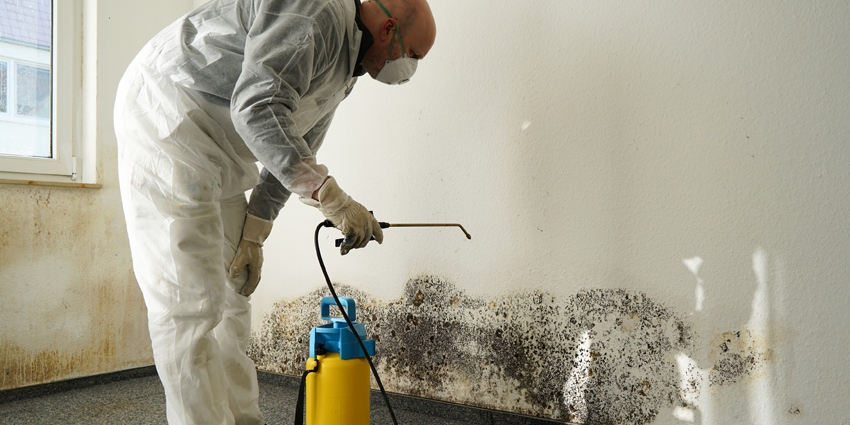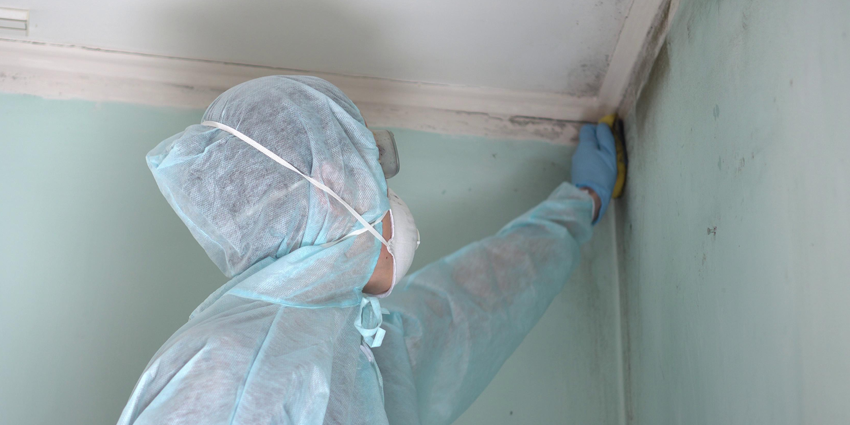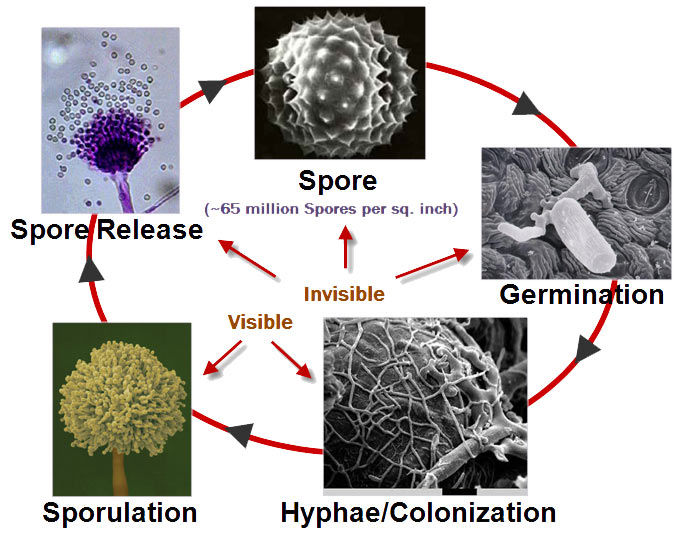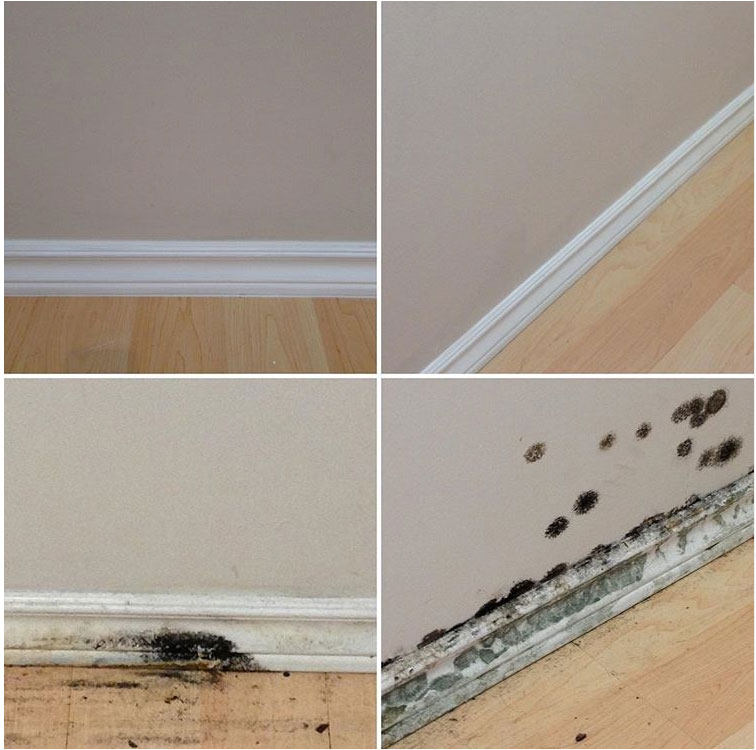Mold Inspection, Testing & Remediation
Do you suspect hidden mold?
Have you had moisture problems?
Mold spores not only result in major property damage; they also contain toxins that can cause severe allergic reactions and other respiratory diseases.
Inspection Channel mold inspectors are trained and equipped to detect mold and prevent its further spreading, protecting you and your family from breathing in harmful toxins.
Inspection Channel performs detailed indoor environmental assessments, air quality testing, mold inspections and mold remediation to help you improve your indoor environment.


“Mold in housing is one of the issues that can impact your health and your family’s health. Yes, when there’s a lot of mold in a home, it’s not a simple problem to address and usually requires professional help. However, everyone has a role to play in preventing mold and understanding what to do to clean up small areas and how to get help with larger areas. Even the little things you do can help your health!”
Reference: Dr. Thomas Digman, Health Canada
Mold Resources
- Potential health effects and symptoms associated with mold exposures include allergic reactions, asthma, and other respiratory problems.
- There is no practical way to completely eliminate mold and mold spores in the indoor environment. The way to control indoor mold growth is to control moisture.
- If mold is a problem in your home or building, you must clean up the mold and eliminate sources of moisture.
- To prevent mold growth any source of a water problem or leak must be repaired.
- Indoor humidity must be reduced (generally below 60%) to reduce the chances of mold growth by: adequately venting bathrooms, dryers, and other moisture-generating sources to the outside; using air conditioners and de-humidifiers; increasing ventilation; and using exhaust fans whenever cooking, dishwashing and cleaning.
- Clean and dry any damp or wet building materials and furnishings within 24-48 hours to prevent mold growth.
- Clean mold off of hard surfaces with water and detergent and dry completely.
- Prevent condensation: reduce the potential for condensation on cold surfaces (e.g., windows, piping, exterior walls, roof, or floors) by adding insulation.
- In areas where there is a perpetual moisture problem on the floor, do not install carpeting
- Mold can be found almost anywhere. Mold can grow on wood, paper, carpet, foods; almost anything can support some mold growth provided there is moisture, time to grow and food to eat.
- Mold is an important organism and part of the natural environment
- It is estimated that molds and other fungi make up approximately 25%of the earth biomass
- Mold can be harmful or helpful depending on where it grows

- There are 100,000 – 300,000 species world-wide, most of which have yet to be classified
- Mold needs moisture to grow In ideal conditions mold can complete its growth process in as little as 24 to 48 hours
- Little light and insufficient airflow is the perfect environment for mold to flourish
- Mold comes in many colours
- Some compounds produced by molds have strong smells (VOCs)
- VOCs often have a strong or unpleasant odours
- A musty or earthy smell suggests that mold is growing and should be investigated
- Toxicosis
- Allergies
- Irritation
- Asthma
- Chronic Sinusitis
The most common symptoms of mold exposure are runny nose, eye irritation, cough, congestion, and aggravation of asthma. Individuals with persistent health problems that appear to be related to mold or other types of air quality contaminant exposure should see their physicians for a referral to specialists who are trained in occupational/environmental medicine or related specialties and are knowledgeable about these types of exposures.
Decisions about removing individuals from an affected area must be based on the results of such medical evaluation. Mold is naturally present in outdoor environments and we share the same air between the indoor and outdoor, it is impossible to eliminate all mold spores indoors.
Mold Remediation
The removal of mold involves 3 main steps:
1. CONTAINMENT: Isolate the problem area to prevent further spreading. This is usually done with negative air pressure equipment fitted with HEPA filtration
2. REMOVAL: All contaminated materials (dry wall, boxes, flooring, carpet, etc.) need to be removed and disposed of appropriately
3. CLEANING: Inspection Channel’s certified Mold Removal Specialists safely remove mold from all contaminated surfaces using the latest certified techniques.


Our Reviews
"Responsive, a great listener and extremely knowledgeable"
Gerrard was responsive, a great listener and extremely knowledgeable. Many professionals from various companies (6) had come to check out a weird odor coming out from one of our vents but were unsuccessful at determining what it was. Within a few minutes Gerrard was pretty certain that it was a dead animal smell (mouse ?) and arranged for a professional duct cleaning service to come out at a much more reasonable price than I had previously received from another company. The odor disappeared as a result of the cleaning. Gerrard did a follow-up and was delighted with our results and commented on how nice the house smelled. Excellent, friendly, honest and helpful service especially in giving me calming and reassuring professional information which eliminated my fears. An honour and pleasure to meet Gerrard and accept his help.
Great service, very professional team
Great service, very professional team, all work done to spec and on schedule. I would highly recommend them.
"What a terrific company"
We’re having some renovations done to our main bathroom and once the contractors opened up the walls, they noticed some mold which meant they had to stop working, which caused a delay in my renovations.
Gerrard came to the house the same day I called him and provided a quote and assessment. I waited for another quote and then on a Friday, I decided to go with Gerrard’s company. I wanted the work to be performed immediately so that my contractors can come back to work on Monday. Gerrard was able to send Joe to my house on Saturday morning and because I had to leave my house at 8am, Joe arrived at 6:45am to finish the job before I left.
Joe came in, explained the process and got to work. He was finished within the hour. He was very friendly and courteous.
This morning (Monday) I had some issues with my bathroom contractors and Gerrard was able to smooth over the situation.
What a terrific company and both Gerrard and Joe are awesome. I would use them again and recommend them to anyone looking for professionals.
"Very good quality worksmanship"
Very good quality worksmanship. The attic that was once covered in mold, looks brand new again like the mold was never there. Would highly recommend!
"High quality service, fast and efficient"
High quality service, fast and efficient. Have used them numerous times. Best in the business!
"Wonderful job and great people. We will definitely use there services going forward"
We had a sewer backup at he spa and we needed somebody as soon as possible. Gerrard and his team came in within the hour and worked overnight to get the rooms ready for Monday morning.
Wonderful job and great people. We will definitely use there services going forward
